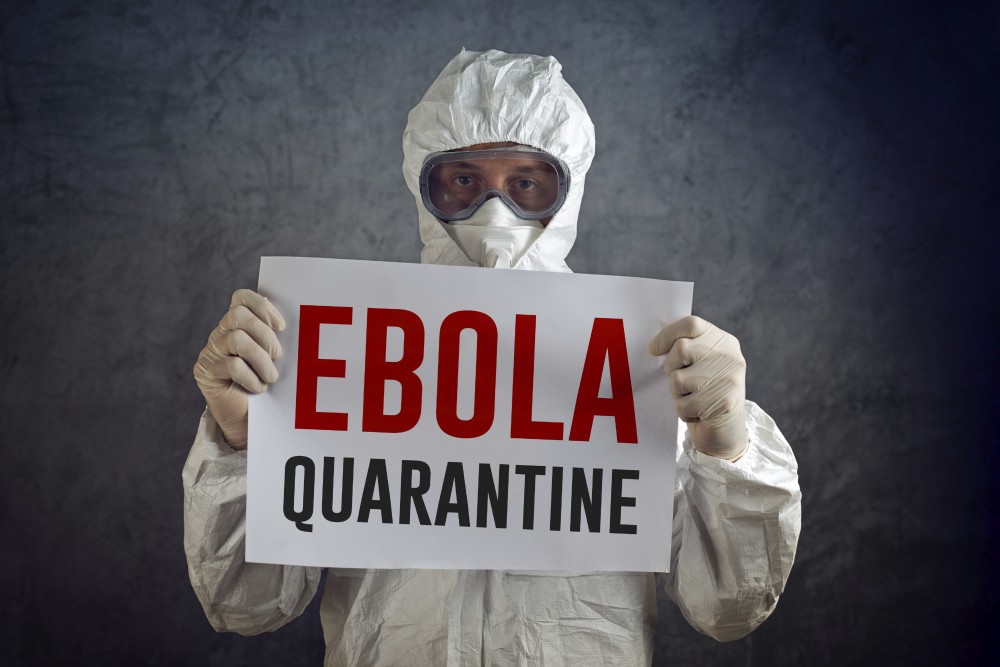Tensions Rise Over New Ebola Precautions

Ebola Quarantine sign held by medical healh care worker wearing protective gown, glowes, mask and goggles.
November 7, 2014
New Jersey Gov. Chris Christie and New York Gov. Andrew Cuomo joined together and issued a common quarantine policy for New Jersey and New York on Oct. 24 in an effort to contain the spread of Ebola. While their specifications for the minimum precautions to be taken with individuals exposed to the virus were seen by their administrations as being, as Gov. Cuomo said, “better safe than sorry,” the precautions were soon under fire from the White House and several humanitarian groups, including Doctors Without Borders.
The quarantine applied only to “high risk individuals,” which are individuals who had come into direct contact with bodily fluids from an infected individual without wearing any protective gear. Those individuals were to be taken to a government-monitored facility for 21 days of close health monitoring, after which they would not be subjected to any other unusual treatment because their well-being would be conclusively established.
This quarantine, while technically applying to every- one returning from an Ebola-infected area, is most pertinent to returning healthcare workers. White House officials criticized the regulations as too strict. They expressed fear that such measures would deter individuals from choosing to go overseas to assist in Ebola-affected areas. Officials expressed hesitations about the scientific evidence used to support Christie’s and Cuomo’s regulations, saying the regulations were “overkill.”
Because of the intense criticism, both Christie and Cuomo altered their policies over the following three days and allowed for home quarantine in lieu of quarantine in a government facility. This new quarantine still only applies to individuals who were known to have come into contact with Ebola-infected bodily fluids. The quarantine itself only refers to a twice daily check up with a healthcare worker who will take the individual’s temperature and look for any signs of infection. The individual’s family members are allowed to stay in the house, and visitors are allowed, but must be reported to healthcare workers.
Though this second form of quarantine represents a significant relaxation of the initial quarantine procedures, it has nonetheless continued to attract the criticism of White House officials, who say the regulations are still too strict. They worry that such specialized treatment of individuals who have come into direct contact with Ebola-infected bodily fluids, but show no signs of being infected themselves, might make them reluctant to treat individuals here in the United States.
The White House points out that a person is only contagious once symptoms manifest themselves. Before that time, an infected person is not a threat. Some officials fear that overly-protective measures could harm more than they help because of their potential to cause widespread fear over something that does not pose an immediate threat











